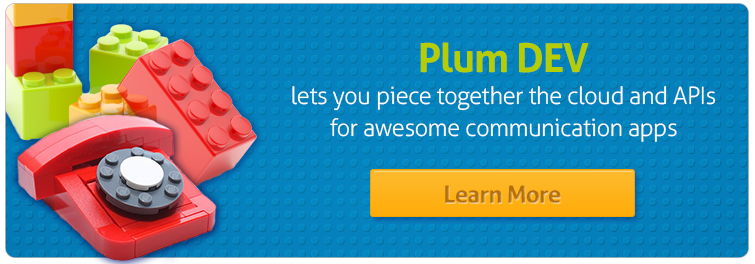The Compatibility Quandary
When adopting a new piece of technology one of the concerns that anyone involved with the project has is whether the new solution will play nicely with what is already in place. How many potential technology purchases have died on the vine because of the “I” word? Integration.
When we’re talking about automating tasks there is no shortage of possible software to integrate with a communications application. For example, personalizing communication requires integrating with CRM or ERP databases. There may be additional databases or tools that you want to incorporate into your communications, too.
But it’s not always software that has to get along with other software, sometimes hardware is on the table too. When dealing with anything telephony related, figuring out which components communicate with each other can get confusing pretty quickly. (Our back to basics series breaks down the PSTN, VoIP, and SIP trunking, for those who want a quick primer.)
Obviously, if the new technology can’t integrate with what you already have, then there’s little reason to continue considering adopting it.
The Babel Fish of Software Integration
In The Hitchhiker’s Guide to the Galaxy, there is an alien fish species called a babel fish. One sticks the babel fish in their ear and it enables them to understand anything than anyone says in any language. It’s a universal translator. The role of the Application Program Interface (API) is very similar in that it helps different pieces of technology to communicate with each other.
APIs are basically a set of rules, procedures, protocols, and tools that enable technology to exchange information. Let’s use a database as an example. By codifying how an external source interacts with the database, i.e. which commands are allowed to be executed and which aren’t, the protocol for transferring information, and how that information needs to be structured in order to be used properly ensures that no matter what application is on the other end of the API the correct information will get to the right place.
API Support
In the world of cloud computing APIs make the world go round. Many companies that offer software as a service (SaaS) or other cloud-based technology create APIs for their product so that developers can build products and services directly into other applications. This cross-pollination is the reason why so many mobile apps and websites are able to integrate with social media channels.
APIs are ubiquitous. No doubt a quick search for your favorite technology and the term “API” will yield enough results to keep developers employed for quite some time. Even if there isn’t already an API in existence for a desired technology pairing, technology vendors are capable of creating custom APIs to guarantee that what once would not integrate is now capable of doing so.
APIs are not limited to a 1:1 ratio either. For example, if a programming platform uses multiple automatic speech recognition (ASR) engines, it’s possible to create a single API for all of the different ASR engines that allows users to easily switch between engines without having to integrate each one independently. Tapping into the API means access to all of the available engines is just a few key strokes away.
Finding the right technology solution doesn’t have to be a stressful, hair-pulling affair. Because compatibility and integration are so critical a lot of headaches can be eliminated at the outset of a product search by asking what APIs a given piece of technology, like a platform as a service, can accommodate and how willing a vendor is to create custom APIs for new integrations. The answers to these questions should help expedite the selection process.
APIs are one of the best ways to ensure that your technology is making the most of cloud technology. Anything else may just result in a jolting fall back to Earth.


